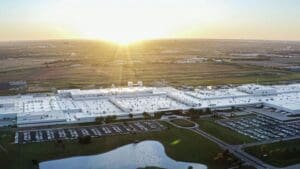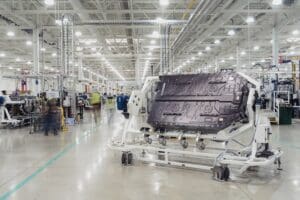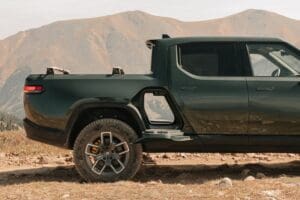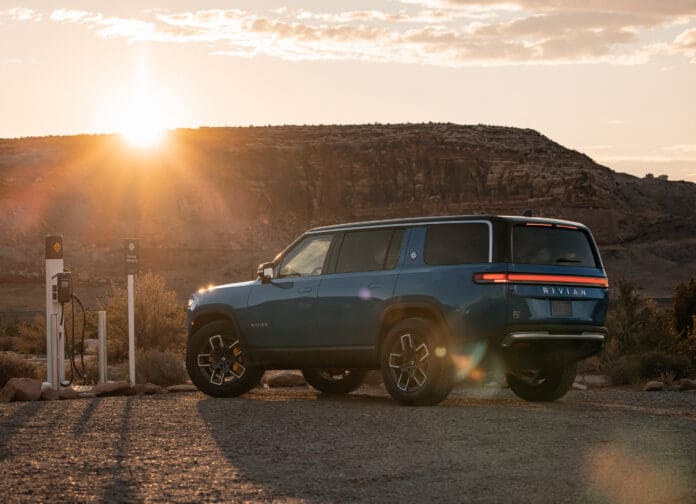Electric vehicle (EV) maker, Rivian Automotive (Rivian), reported its Q4 2022 and full-year 2022 earnings on February 28, 2023. The company has produced more than 25,000 vehicles since production began in late 2021. For 2023, Rivian is guiding for production of more than 50,000 units, a goal it had originally set for 2022. However, like many EV makers, supply chain disruptions and higher costs delayed Rivian’s growth trajectory.
Even as production growth is set to more than double, Rivian admits it is still burning through cash at a breakneck pace. Rivian is currently losing money on every vehicle it produces. It doesn’t expect gross margins to turn positive until 2024 at the earliest. The business plan is to essentially scale production to the point where economies of scale unlock profitability. It’s a similar business model to Tesla, which wasn’t consistently profitable until 2020.
All told, Rivian is guiding for 2023 capital expenditures of US$2 billion and an adjusted earnings before interest, taxes, depreciation, and amortization (EBITDA) loss of US$4.3 billion. Put another way, Rivian expects to lose a staggering US$83,000 in adjusted EBITDA per vehicle produced in 2023. Rivian’s saving grace is that it has US$12.1 billion in cash left from its initial public offering (IPO). If the company threads the needle just right, it could reach profitability right before it runs out of cash. If not, Rivian may have to do another capital raise and further dilute its stock.

Rivian’s main issue is that current production capacity far exceeds its production. The company’s plant in Normal, Illinois, currently sports a nameplate capacity of about 150,000 units per year, triple what the company expects to produce in 2023. The reason for the stark difference is that Rivian had to time the scale of its manufacturing capacity to match what it expected from customers. Again, supply chain challenges paired with weakening consumer demand for large discretionary purchases threw a wrench in Rivian’s short-term outlook and caused its manufacturing to exceed what is currently necessary.
To try and bridge the gap between capacity and production, Rivian has implemented a second shift at the Normal factory. Working in Rivian’s favor is strong reception of its R1T electric pickup truck and its R1S electric SUV. Rivian said its net preorder backlog extends to 2024, meaning 2023 is all about simply producing and delivering vehicles.

Despite its struggles, Rivian is the top electric pickup truck automaker right now. In 2022, it delivered nearly double as many electric pickup trucks as Ford. And Tesla has yet to deliver its electric pickup truck, known as the Cybertruck. Rivian is also investing in its own charging network and putting effort into shaping its brand to appeal to the outdoors market.
The Inflation Reduction Act (IRA) includes favorable terms for Rivian, including a US$7500 EV tax credit and US$7.5 billion toward building a nationwide EV charging network. Easily accessible and ubiquitous charging is essential for Rivian’s adventurous target market.
Despite a challenging road ahead, Rivian is laying the groundwork for multi-decade growth potential. In addition to a capacity expansion at the Normal plant which would boost production to 200,000 units per year, the company has plans in the works for a plant in Georgia with a nameplate capacity of 400,000 units per year. Rivian also has an order from Amazon for 100,000 electric delivery vans (EDVs). Rivian has already delivered several EDVs to Amazon and reported more than 10 million packages delivered via EDVs as of December 31, 2022.

Rivian got lucky in the sense that it went public at the perfect time. At the time of Rivian’s IPO in November 2021, the worst of the COVID-19 pandemic seemed to be in the rear view. Consumer spending was booming, federal stimulus was pouring in, investor optimism was high, and inflation fears had yet to take hold. Rivian was able to raise a boatload of cash largely due to good timing. With the IPO market falling off a cliff in 2022, it’s safe to say if Rivian had waited to go public it wouldn’t have garnered nearly as much cash and would likely be unable to support its ambitious production targets.
Rivian sits at a uniquely interesting position in 2023. Unlike legacy automakers that are investing in electric pickup trucks, Rivian doesn’t have the burden of maintaining an existing internal combustion engine (ICE) business. It also has a large net cash position rivaled only by Tesla, Chinese electric automaker, Nio, and a handful of other companies. Rivian’s vehicles also sport truly remarkable specifications. The R1T has 260 to 400 miles (418 to 644 km) of range, can go 0 to 60 mph in as little as three seconds, and starts at a relatively affordable US$73,000. Meanwhile, the R1S has 260 to 390 miles (628 km) of range, can go 0 to 60 mph in as little as three seconds, and starts at a relatively affordable US$78,000. Both vehicles also have impressive towing capabilities and far greater storage than a comparable ICE pickup truck.

Rivian is in prove it mode. The company said that as supply chain challenges have eased, it expects 2023 to be a better year than 2022. In many ways, it should be the company’s first full, somewhat normal calendar year in operation. No automobile startup has even been afforded the leash and financial backing that Rivian has received so early into its production timeline. However, if Rivian can prove that EV pickup trucks and SUVs can outperform and be cost competitive with their ICE counterparts, then Rivian could end up accelerating EV adoption in the United States.
















